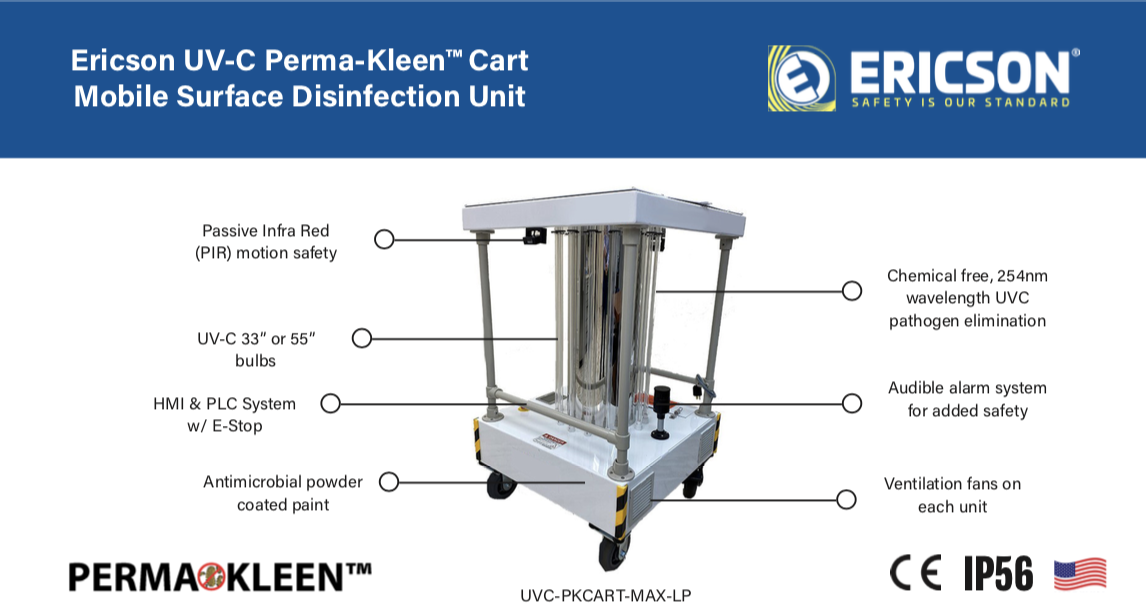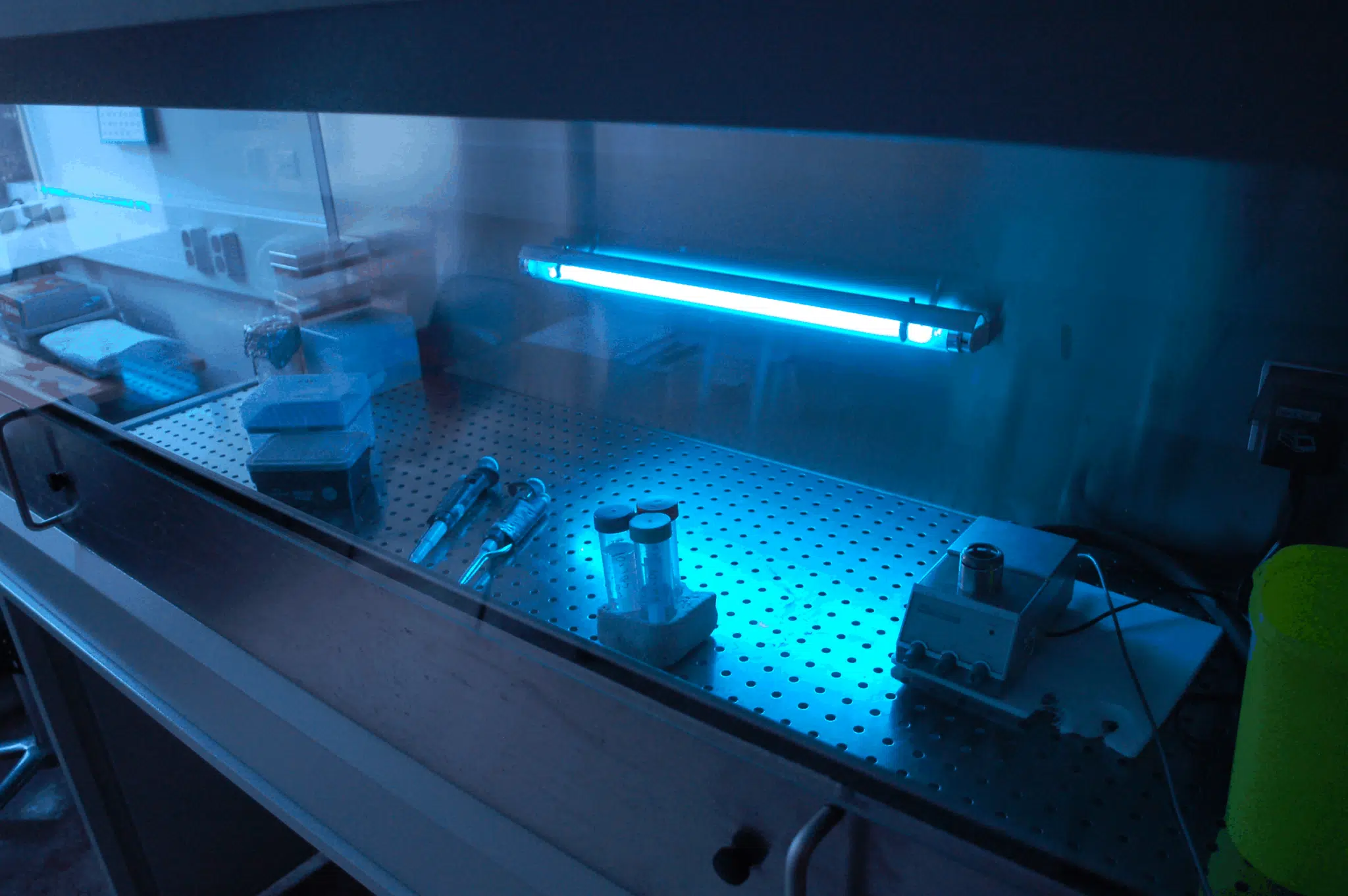Checking out the Perks of Far-UVC Innovation in UV Sanitizers: A Complete Overview
Discovering the Advantages of Far UVC Light: Changing Indoor Air Top Quality
One such option that has actually acquired interest is Far UVC light. How exactly does Far UVC light work? In this conversation, we will discover the interesting world of Much UVC light and uncover its possibility in transforming the method we guard our indoor settings.
How Much UVC Light Functions
Much UVC light works by emitting short-wavelength ultraviolet light that has the capability to pass through and inactivate bacteria. Unlike standard UV light, which can be harmful to human skin and eyes, much UVC light has a shorter wavelength that is taken in by the outer layers of human skin, preventing it from getting to the underlying living cells. This makes it a efficient and safe alternative for continuous sanitation in occupied spaces.
When far UVC light is produced, it communicates with the DNA and RNA of bacteria, consisting of viruses and bacteria, disrupting their capacity to duplicate and causing them to become inactive. The high energy of the short-wavelength light damages the molecular structure of the genetic product, stopping the microorganisms from recreating and spreading out.

Furthermore, far UVC light can be easily integrated into existing lights components, making it a cost-effective remedy for a wide variety of applications, consisting of healthcare facilities, institutions, workplaces, and public transportation. Its ability to constantly sanitize occupied areas without presenting a threat to human health and wellness makes far UVC light a promising innovation in the area of interior air quality monitoring.
Much UVC Light's Effect on Airborne Pathogens
The effect of much UVC light on air-borne virus is significant in decreasing the transmission of infectious conditions and improving interior air top quality. Far UVC light refers to a particular variety of ultraviolet light that has a wavelength in between 207 and 222 nanometers. Unlike conventional UVC light, which is harmful to human skin and eyes, far UVC light has actually been located to be risk-free for people while still being reliable against virus.
Researches have shown that far UVC light has the ability to suspend a large range of airborne infections, consisting of the influenza infection and the coronavirus (far-uvc). These microorganisms are transferred via respiratory beads, and by making use of much UVC light, it is feasible to minimize their viability and prevent their spread
One of the essential advantages of making use of much UVC light is its capability to get to all locations of a space. Unlike other sanitation methods that may have restricted reach, much UVC light can be set up in overhead lighting components, making sure that the whole room is treated. This makes it specifically efficient in crowded areas such as hospitals, schools, and public transport.
In addition, far UVC light can be made use of continuously without presenting a danger to human health. It can be executed as part of an extensive technique to improve interior air quality by decreasing the focus of air-borne virus. By including much UVC light right into existing ventilation systems, it is possible to develop more secure and much healthier indoor settings.
Wellness Perks of Far UVC Light
Making use of much UVC light provides countless health and wellness advantages, making it an important tool in promoting public health and safety and here security. Far UVC light has actually been discovered to successfully eliminate airborne pathogens, such as viruses and microorganisms, without damaging human skin read this or eyes. This makes it a suitable service for sanitizing indoor environments and lowering the risk of infections.
One of the key health and wellness advantages of much UVC light is its capacity to battle the spread of airborne diseases. Studies have revealed that much UVC light can effectively suspend viruses like influenza and consumption. By setting up much UVC lighting fixtures in public spaces, such as healthcare facilities, institutions, and workplaces, the transmission of these diseases can be considerably lowered.
In addition, much UVC light has actually been located to be secure for continuous exposure, as it does not create skin damages or raise the risk of skin cancer cells. This is due to the fact that much UVC light has a minimal variety of infiltration in human skin, stopping any harm to much deeper layers.
Along with its direct influence on air-borne microorganisms, far UVC light can additionally have indirect health and wellness benefits. By reducing the visibility of unsafe microbes airborne, it can improve indoor air top quality, resulting in a decrease in respiratory symptoms and allergic reactions.
Far UVC Light's Duty in Lowering Irritants

Much UVC light, with its wavelength in the variety of 207 to 222 nanometers, has been confirmed to be efficient in inactivating bacteria, infections, and fungi. Recent studies have also shown that it can properly reduce the existence of allergens in indoor rooms. When much UVC light is discharged, it communicates with the DNA and RNA of microorganisms, damaging their hereditary product and avoiding their duplication.
Much UVC Light's Possible in Public Spaces
With its tried and tested effectiveness in minimizing irritants and suspending microbes, far UVC light holds excellent possible for application in public areas. Public areas, such as health centers, flight terminals, institutions, and offices, are typically crowded and prone to the spread of air-borne conditions. Integrating far UVC light modern technology in these locations can dramatically boost interior air quality and reduce the transmission of dangerous microorganisms.
One appealing application of far UVC light in public rooms is in air flow systems - far-uvc. By mounting much UVC lamps in heating and cooling systems, the innovation can decontaminate the air as it flows, properly lowering the focus of air-borne infections and germs. This method can assist avoid the spread of diseases such as flu, tuberculosis, and COVID-19, advertising a much healthier and much safer atmosphere for owners
Additionally, much UVC light can be utilized in the disinfection of regularly touched surface areas. High-touch areas in public rooms, such as doorknobs, hand rails, and elevator switches, can nurture a plethora of virus. By purposefully putting much UVC source of lights in these locations, the modern technology can constantly disinfect surface areas, decreasing the risk of contamination and transmission.
Additionally, the use of much UVC light in public spaces is safe for human exposure. Unlike traditional UVC light, which can be unsafe to human skin and eyes, much UVC light has been shown to be safe and risk-free for constant procedure in busy rooms. This makes it a perfect option for boosting interior air quality without posing any health risks to individuals.
Conclusion

Much UVC light works by sending out short-wavelength ultraviolet light that has the capability to pass through and inactivate microbes. Unlike standard UV light, which can be dangerous to human skin and eyes, much UVC light has a much shorter wavelength that is taken in by the outer layers of human skin, stopping it from reaching the underlying living cells. Far UVC light refers to a specific variety of ultraviolet light that has a wavelength in between 207 and 222 nanometers. Unlike traditional UVC light, which is unsafe to human skin and eyes, far UVC light has actually been found to be safe for human beings while still being effective against virus.
Unlike conventional UVC light, which can be dangerous to human skin and eyes, far UVC light has been confirmed to be secure and safe for continuous procedure in busy spaces.